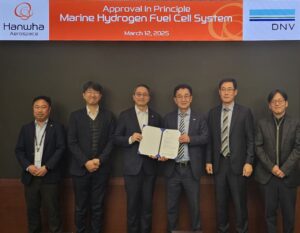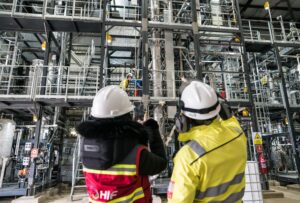25 pct of ships in California will have to use green hydrogen fuel cell electric propulsion by 2045

The California Air Resources Board (CARB) has released its final 2022 Scoping Plan, the state’s five-year roadmap for achieving its climate goals, which mandates, among other things, that at least 25% of ships in California waters will need to use green hydrogen fuel cell electric propulsion by 2045.

The plan is being released after months of consultation with climate experts and advocates, and it reflects significant improvements, including the initiation of an interagency process to phase out oil and gas extraction and refining.
It lays out the sector-by-sector roadmap for California to achieve carbon neutrality by 2045 or earlier, outlining a technologically feasible, cost-effective, and equity-focused path to achieve the state’s climate target.
The major element of the transformation is the aggressive reduction of fossil fuels wherever they are currently used in California, from residential heating to transportation.
Related Article
Under the current At Berth legislation, California seeks to have the majority of ocean-going vessels utilize shore power by 2027. The plan also proposes that at least 25% of ships in California waters will need to use green hydrogen fuel cell electric propulsion by 2045.
“We thank CARB for moving the needle to achieve zero carbon pollution, and applaud their leadership to end port pollution and move ships towards zero-emission technologies. This world-first target for hydrogen fuel cell electric propulsion for ships will help catalyze the green hydrogen fuel cell technology market,” said Teresa Bui, State Climate Policy Director, Pacific Environment.
“However, aiming to cut just 25% of fossil fuel propulsion from the shipping industry by 2045 is wholly insufficient when California’s port communities are suffering now and climate science tells us the shipping industry must emit absolute zero carbon by 2040 to meet our global 1.5 degree planetary boundary. We call on Governor Newsom and his administration to require 100% zero-emissions from ships by 2040 to meet the climate and public health emergencies of our time.”
Under the plan, one hundred percent of port operations would need to switch their cargo operations to zero-emission equipment by 2037 and one hundred percent of drayage trucks would need to be zero-emission by 2035 as a means of improving air quality and reducing demand for petroleum fuels.
The state’s two major ports, Port of Long Beach and Port of Los Angeles have been investing in zero-emission equipment for a while, and they have also launched cooperation with other ports to create green corridors and accelerate the use of green fuels.
Related Articles
-
Port of Long Beach tests zero-emission electric equipment
Ports & Logistics -
Port of Long Beach wins $30.1 million for clean air project
Business Developments & Projects
Over the past couple of years, California has been experiencing difficulties in maintaining the shore-power mandate amid the impacts of heat waves that exerted massive pressure on the state’s electric power grid. The trend points to a need to bolster the state’s power grid and diversity of power resources and move toward greener power generation. It is also indicative of the massive infrastructural investment ports across the U.S. would require to move to net zero.
Related Article
At the beginning of this year, California Governor Gavin Newsom presented a 2022-23 state budget proposal that includes a planned $2.3 billion investment for Californian ports to reduce congestion.
The proposed plan includes $1.2 billion for port infrastructure and goods movement, $875 million for zero-emission port equipment, short-haul (drayage) trucks, and infrastructure and $30 million for operational and process improvements at the ports.
The plan also involves $110 million for workforce training while $40 million is allocated to enhance California’s capacity to issue Commercial Driver’s Licenses.








